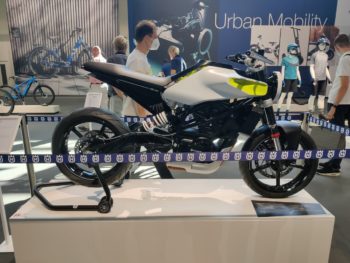American mechatronics engineer and EV enthusiast Matthew Lawrence has spent a good part of the last two years converting an old Suzuki GSX-R750 motorcycle into a fast and slick zero-emissions vehicle for his weekend adventures. Lawrence holds a Masters Degree in Electric-Drive Vehicle Engineering and he learned so much from this project that he will present a paper at an SAE convention in the US that chronicles the journey, a guide which he says would help anyone change their motorcycle to run on battery power. Here’s what Lawrence told us from his base in Detroit:
The start of the journey
It goes back to my undergrad years and with the electric vehicle team that we started, I wanted to do something that was my own. Since I had always been building vehicles, I thought let’s look at what it might cost to do a full car (into an electric), like a Volkswagen bug, but it was way too much for a college student. So I thought looking more at it, started looking at parts and making a little bill of materials. Then, as I finally had enough money and started having my first ‘professional’ job after the internships, I said let’s maybe do a bike. I started looking at different types of bikes and at the end of 2017, my boss said that he had this bike sitting around (a 2006 Suzuki GSX-R750) and that he could give it to me for $1,000. Honestly it wasn’t the bike I thought to be using but I said let’s make it work.
I had help from my job, where some of the techs were willing to help in their off-time with the welding, battery and motor mounting parts, etc. After that, I started buying more parts like the Nissan Leaf’s battery cells (they were the most plentiful cells then), ended up getting a second-hand motor from a university electric vehicle racing team who couldn’t figure out why it wasn’t working but spun after I was playing with it for a couple of hours.
The goal
EVs have always been my thing. I wanted to figure how they actually work from the component level. I wanted take something integrated and take my idea into reality. A good chunk of the work was done this year in terms of getting it running, etc. I built the bike in my basement, so I had to disassemble and bring it up and reassemble one more time.
The bike
I wrote a full step-by-step guide for SAE. I ended up using a lot of MATLAB to kind of model the bike. So in terms of specs, the battery itself is about 8.2 kWh capacity and the motor is a 15 kW unit continuous (34 kW peak). I haven’t weighed the bike yet but it could be in the range of 200 to 250 kg.
The build
The first step that I did was try to mount the batteries, that’s the heart of the project. The batteries had to find their home and the only real place they could go was where the gas tank used to be. After that, it was trying to decide where the motor would go. Because the motor was kind of lower than the batteries and I had to figure out how to fit the battery and the motor in place. The other thing I wanted to do was not do too much modification to the frame, in order to keep the integrity of the frame. If I go chopping and re-welding the frame to fit the parts and I get involved in a crash, the bike would be completely done.
I had put a lot of power electronics in the tail. So I have a 300W DC-DC converter and the charger sits in the tail too. A 1.8 kW charger can charge the batteries to 100% in five hours.
The tech
The motor is a ME1302 unit and I think they were used on some of the Zero Motorcycles way back. The batteries are from a 2017 Nissan Leaf; they are 82 Ah, which is a little bit special because that was the year Nissan increased the capacity of those cells. They also came in a really nice form factor and I didn’t have to do too much to them besides getting some threaded rod, lining up the holes to go on to my battery mount. I got really lucky for my controller. My mount for the battery and the two mounting holes for the inverter lined up perfectly. The inverter hangs directly underneath the battery pack and it worked out too perfectly.
I’m actually disappointed with the BMS (Battery Management System) as I’m having a lot of issues while riding. But this is a prototype bike and I’m learning.
The performance
From my modelling and gear ratio I have on the motor, I should be able to get to about 160 to 169 km/h. I could definitely go faster if I can change the gear ratios, but for around town I think that is reasonable and allows me to go on the highway sometimes as well. The acceleration is phenomenal and it pulls like a monster!
The range that I have currently, from my testing going into the city and back home with an average speed of around 32 to 48 km/h, seems to be about 96 to 112 km right now. I may have clocked around 500 km in total so far, most of them in the last few weeks.
The changes
Most of the parts like the original engine, clutch and transmission all had to go. I ended up replacing the headlamp and fuel tank, while the tail is stock.
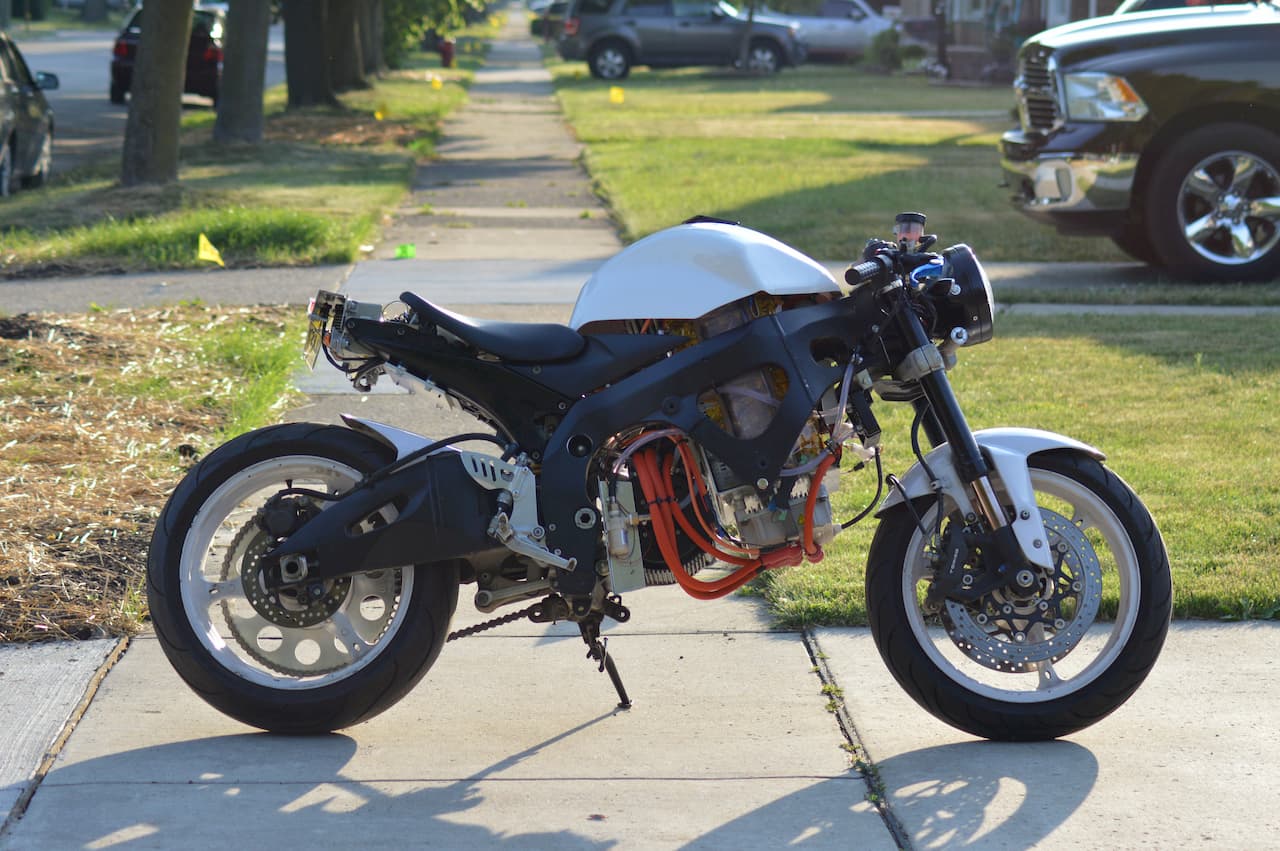
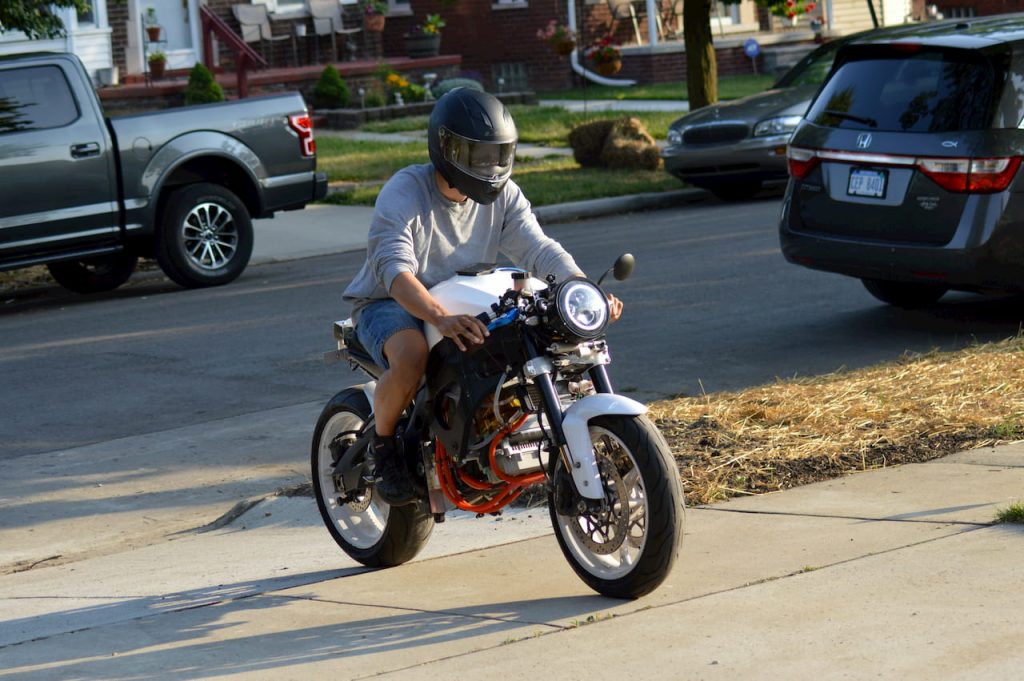
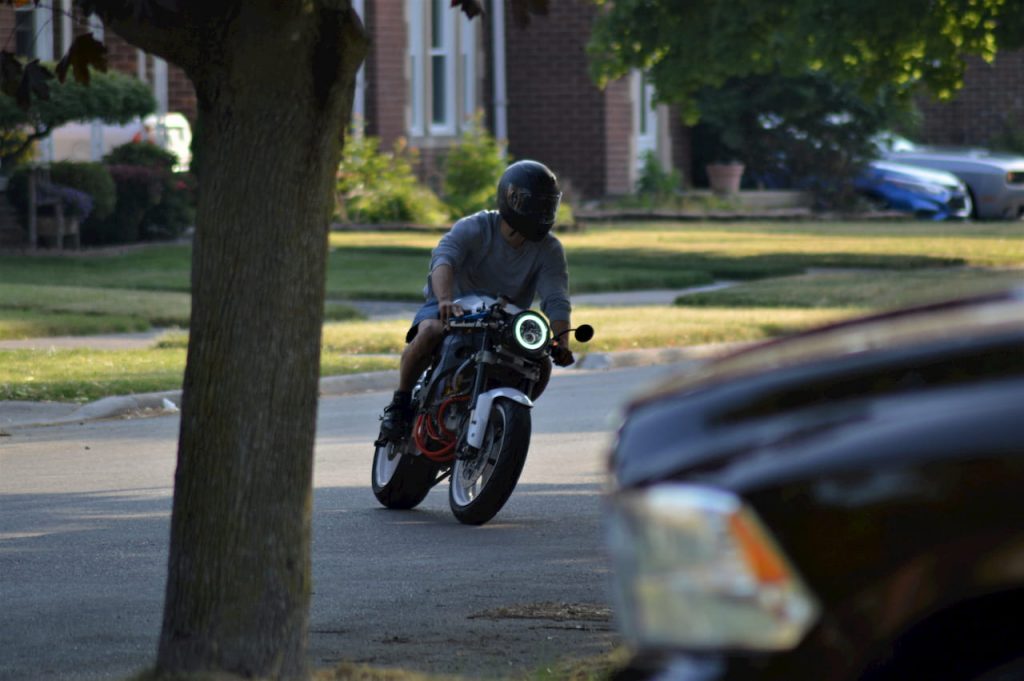
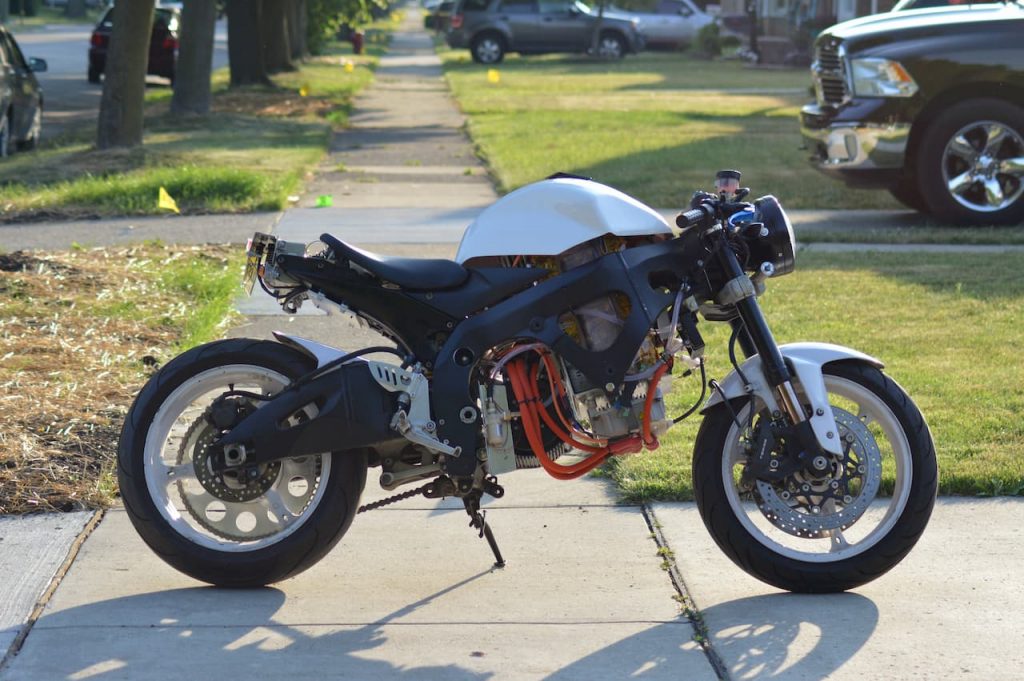

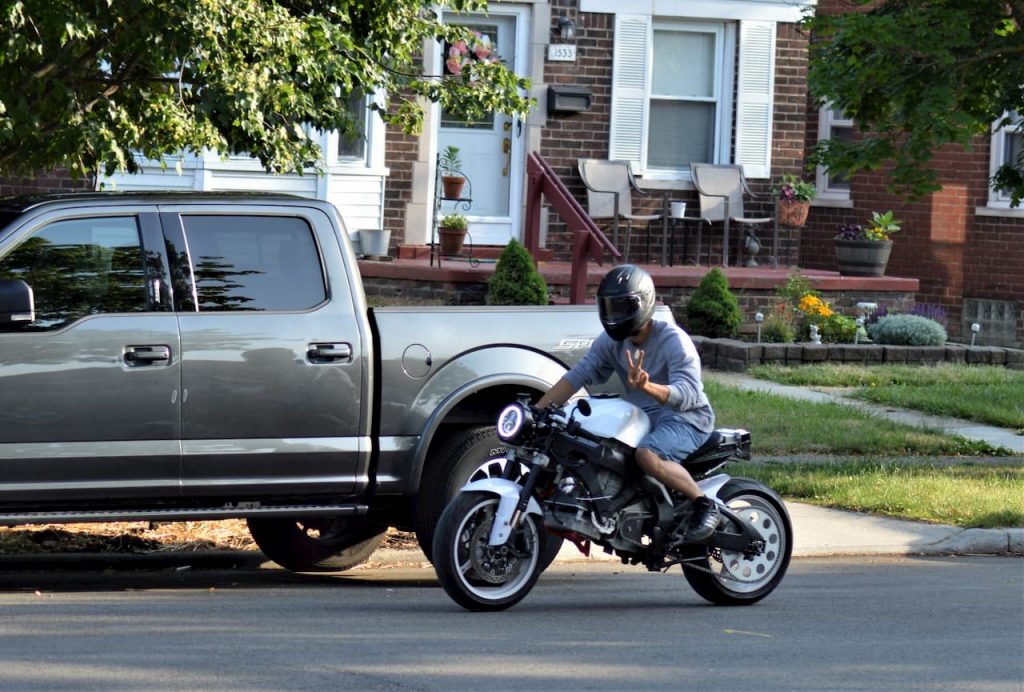

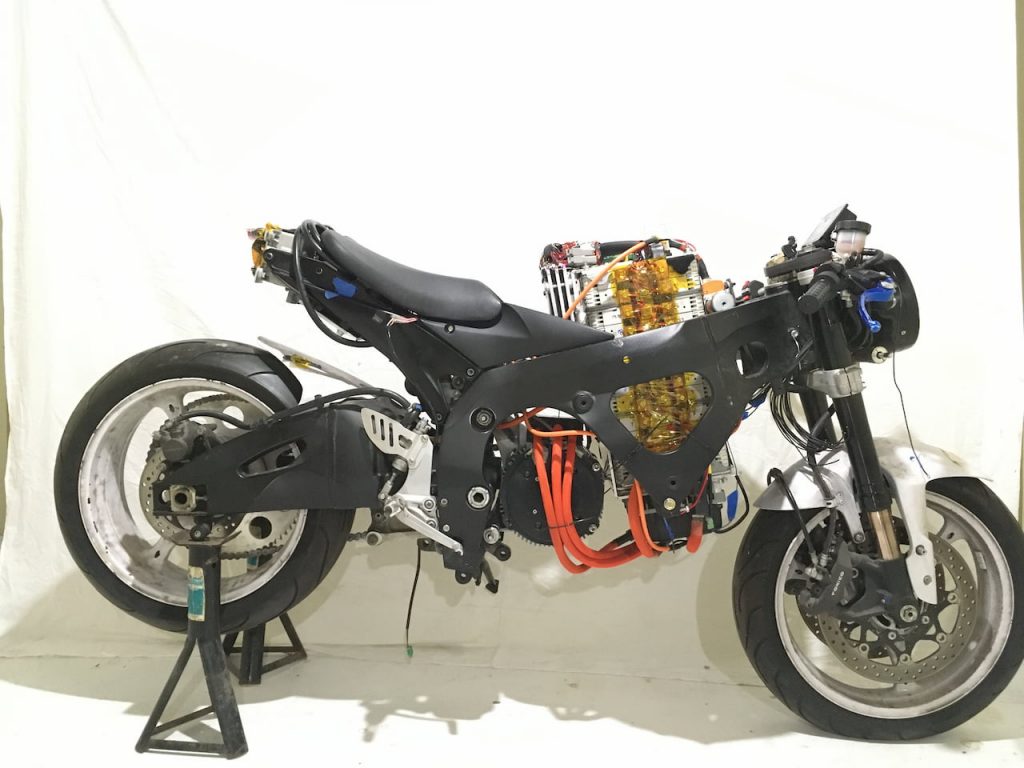
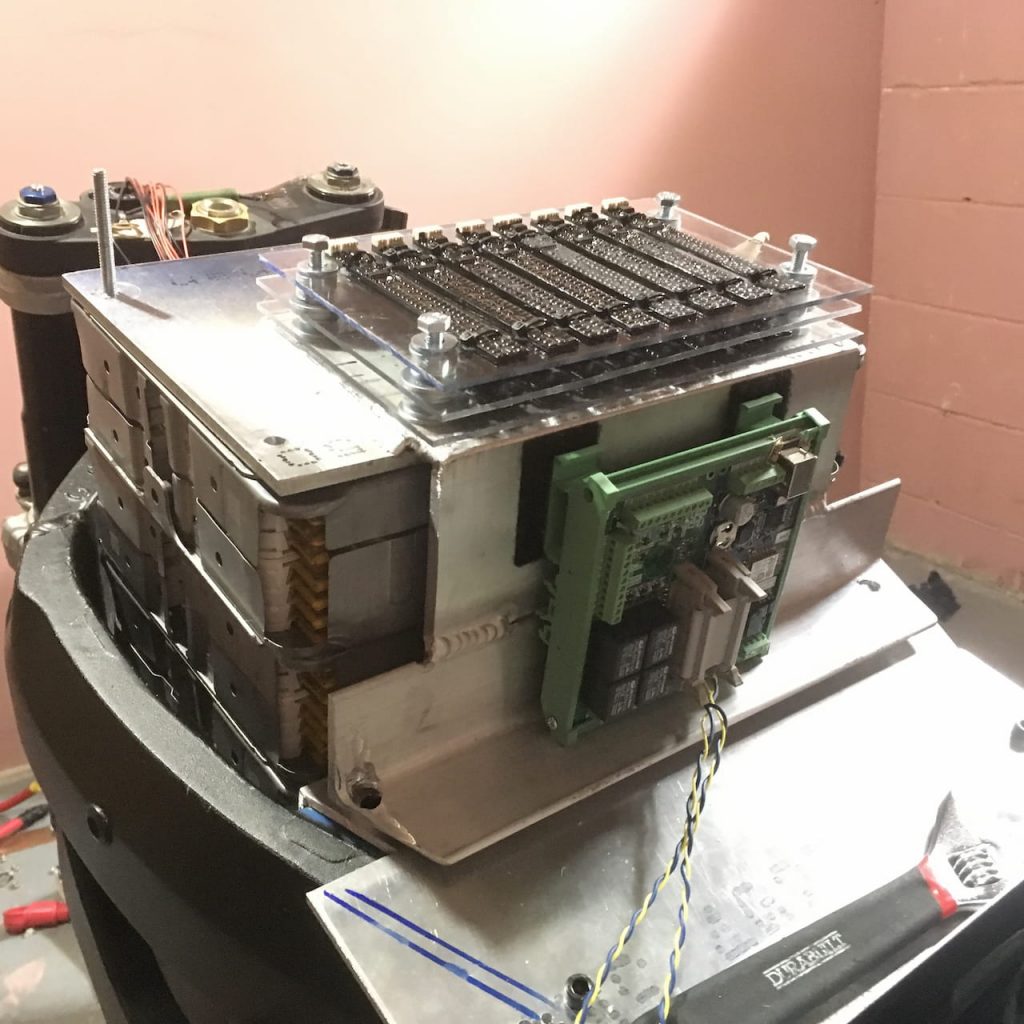
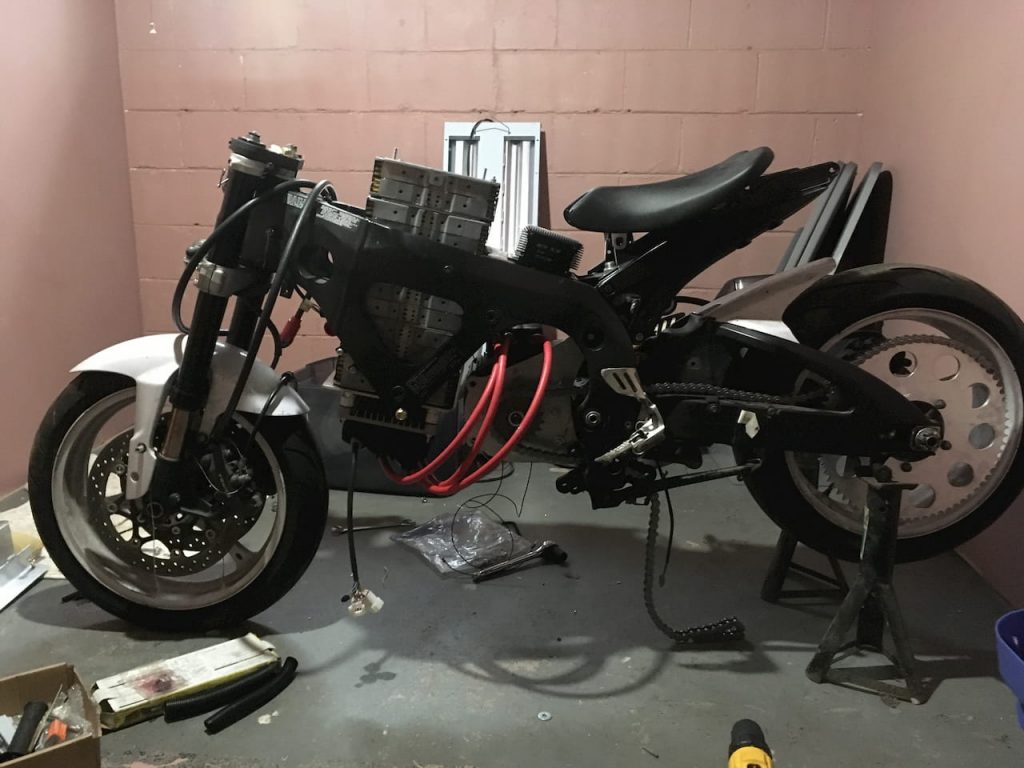
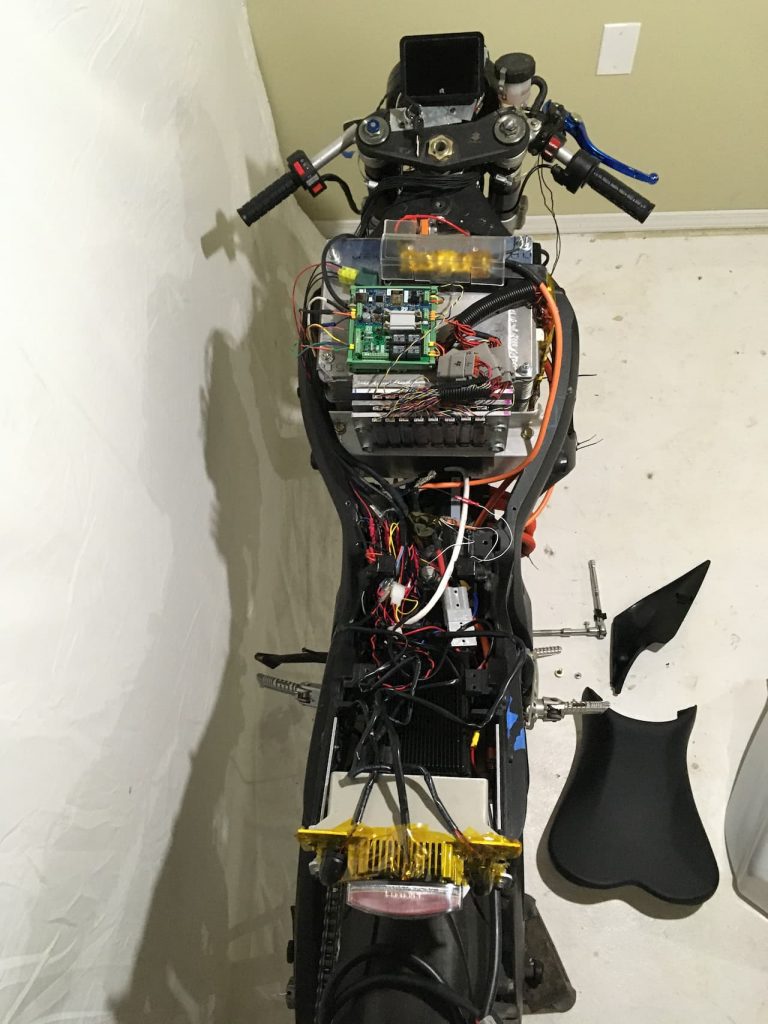

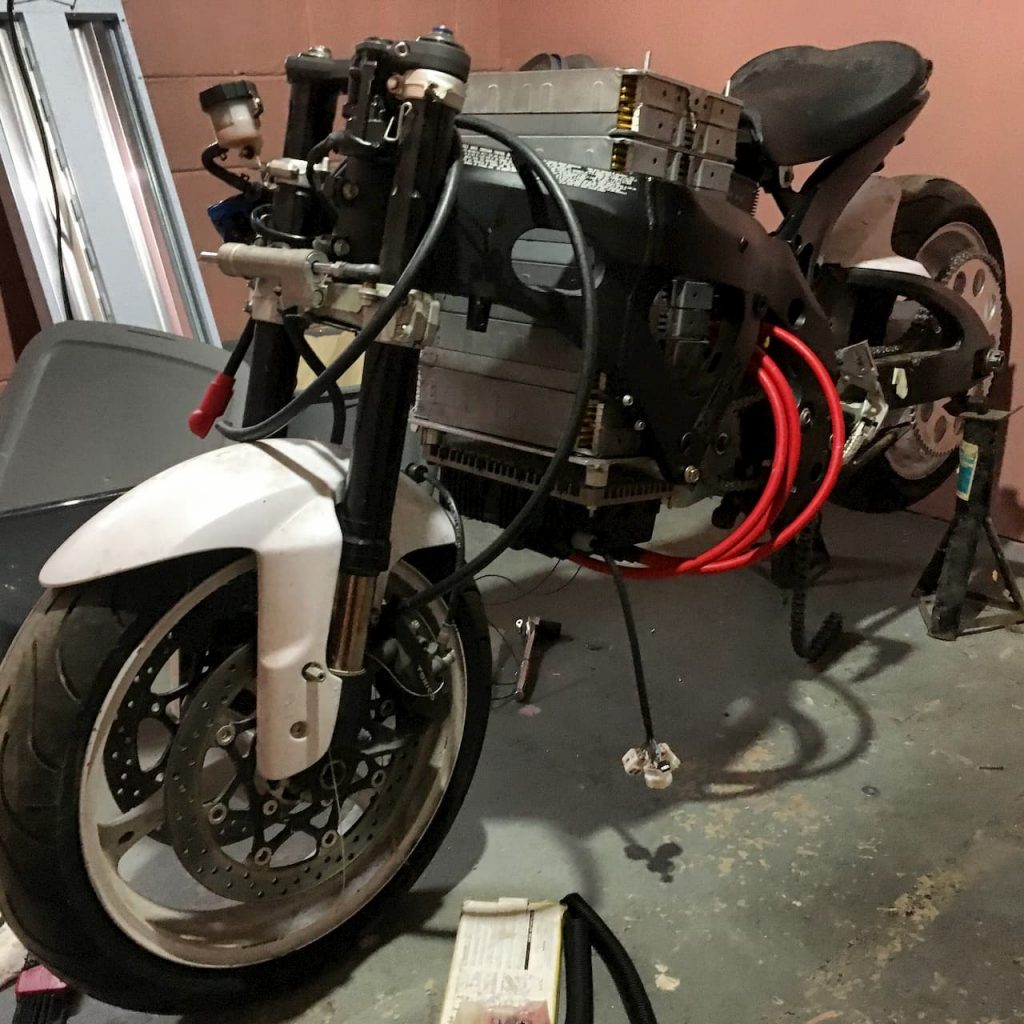
![BMW CE 04 electric scooter prices start at £11,700 [Update]](https://electricvehicleweb.com/wp-content/uploads/2021/07/BMW-CE-04-in-motion-350x259.jpg)
![New details available on the Kawasaki electric bike [Update]](https://electricvehicleweb.com/wp-content/uploads/2020/04/Kawasaki-EV-Endeavor-side-view-350x238.jpg)
